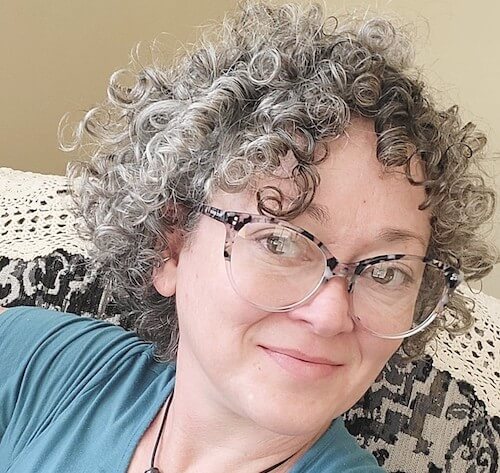If you've noticed what seems like more stray hairs on your shoulders, in the drain of your shower or clinging to your hair brush, it can cause you to wonder things like, "What is considered normal hair loss?" "Should I be worried about hair thinning?" or "Is there anything I can do about excessive hair shedding?"
Shedding quite a bit of hair daily is actually very normal. In fact, the average person loses anywhere from 50-100 hairs per day as part of the hair growth cycle.
To help ease your mind, read on to find out more about the normal rate of hair shedding versus a rate that's cause for concern. Plus, learn what you can do to encourage thicker looking hair.
#include-related-slider#
How Much Hair Loss Is Normal?
As already stated, the natural cycle of hair loss means the average person loses anywhere from 50-100 hairs per day. While that sounds like a lot, you actually have between 80,000 and 120,000 hair follicles on your head overall!
To determine if your hair loss is within a normal range, it can help to have an understanding of the normal phases of hair growth. The following is a quick summary of those phases:
- Anagen (Growth) Phase: About 90% of your hair is in this phase at any given time. This is the longest phase, lasting around two to six years, and consists of hairs being pushed out of the follicles and growing until they are trimmed or reach the end of their life cycle.
- Catagen (Transition) Stage: Less than 5% of your hair is in this phase at any given time. This phase lasts as little as 10 days. During this time, follicles shrink and growth slows.
- Telogen (Resting) Phase: An estimated 9% of hair is in this resting phase prior to shedding. This phase typically lasts about three months. During this time, no growth or shedding typically happens. Instead, new hair starts forming in the follicles.
- Exogen (Shedding) Phase: During this time of completely normal hair shedding, you will lose 50 to 100 hairs per day. And as those hairs shed, new growth will begin.
Excessive hair shedding that's outside of these normal patterns is always a cause for concern. The good news is that, in many cases, this type of hair loss is temporary.
Shop: GRO Collection for Thinning Hair
Causes of Excessive Hair Loss
When you experience excessive hair shedding, it could be due to hormonal changes, such as those that occur after giving birth, as a result of aging or from certain diseases or conditions. Here are some examples.
- Male pattern baldness (could lead to receding hairline or bald spots)
- Female pattern baldness
- High blood pressure
- Anorexia, poor diet, iron-deficiency anemia
- Lupus
- Rheumatoid arthritis
- Anagen effluvium from chemotherapy treatments
- Telogen effluvium from some shock to the system
- Thyroid conditions
Increased hair loss or shedding could also be due to your hair care routine, such as too-tight hair styles, chemical processing, an overuse of hot tools or improper brushing techniques.
Find Out: What Causes Hair Loss? Every Trigger Explained
What Can You Do About Excessive Hair Loss?
As explained, excessive hair loss or shedding can occur for various reasons. However, the first step is to consult with your doctor to uncover whether an underlying medical condition might be triggering it. If so, it will need to be addressed. Beyond that, here are some other suggestions to encourage a healthy head of hair.
Eat a Well-Balanced Diet
A well-balanced diet helps to supply your entire body with nutrition, including your scalp and hair. If you are losing hair too frequently, it may be time to analyze your diet and feed those hair strands what they need to flourish.
Read: 12 Foods to Grow Your Healthiest Hair Ever
Get Stress Under Control
If your stress levels are unmanageable, it's time to get it under control to help manage your shedding hair. Talk with your doctor, make some lifestyle changes that bring you more peace and create a stress management plan that works for you. Your hair will thank you for it!
Related: Everything You Should Know About Stress & Hair Loss
Lighten Up Your Hair Care Routine
Your hair needs to be treated with TLC to be at its best. And unfortunately, routines designed to make hair look good can wreak havoc on it. Too-tight hairstyles, overprocessing and hot tool use can cause damage and even hair loss. Evaluate your current hair care routine to see if you need to change the way you're treating your hair.
Change Up Your Hair Care Products
Targeted hair wellness products can provide the ongoing nourishment your hair and scalp need to thrive. Unfortunately, your go-to products may not be fulfilling those needs. Here are some suggestions.
#include-related-slider#
A Holistic Approach Is Key to Hair Wellness
How many hairs you lose each day can vary from person to person, but those 50-100(ish) hairs are quite normal when it comes to shedding. Occasionally, however, hair loss can amp up and cause concern, such as if you aren't eating or sleeping as well as you should or you've experienced extreme stress or a temporary illness. The best approach to course correct is to take a holistic approach to your overall wellness, which includes getting enough sleep, exercising, staying hydrated, reducing stress, eating well and using hair wellness products. In other instances of concerning hair loss, it's important to see a doctor for a diagnosis.
More From VEGAMOUR
- Why Millions of Women Choose GRO Hair Serum
- 6 Expert-Approved Tips to Stop Hair Thinning
- 10 Vitamin Deficiencies That Cause Hair Loss
- Why Try This Hair Serum from VEGAMOUR
Photo credit: Mathilde Langevin/Pexels
Back


















